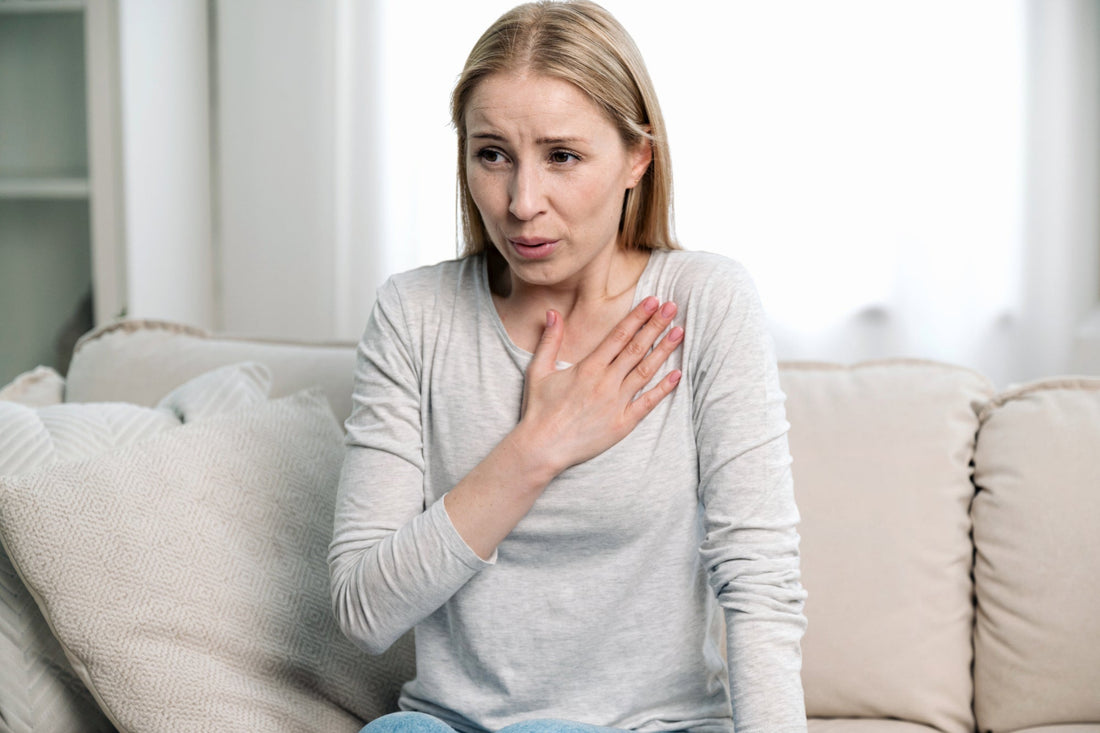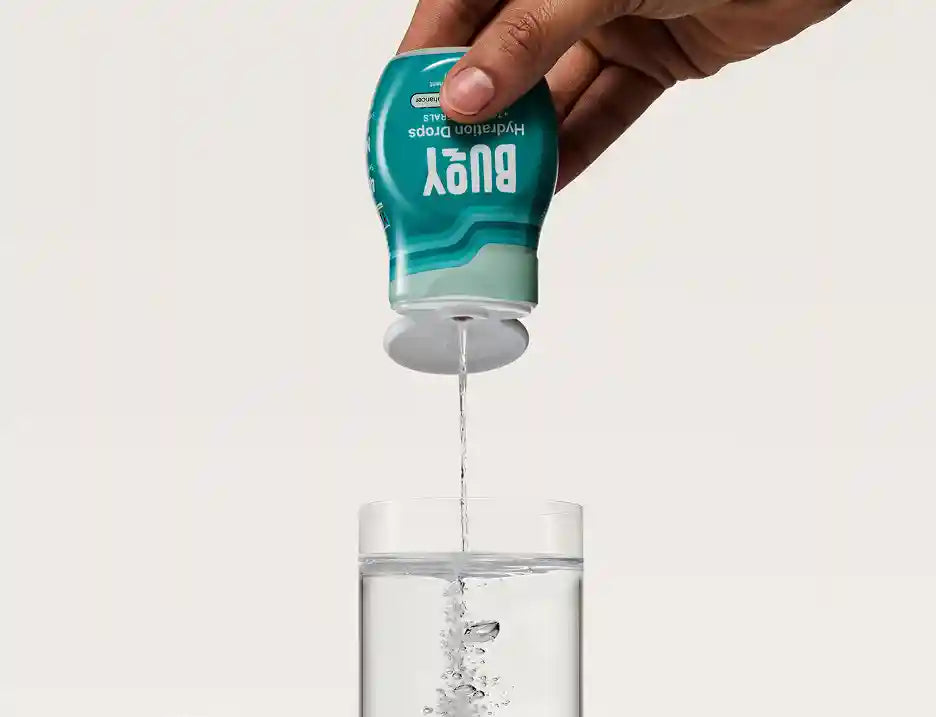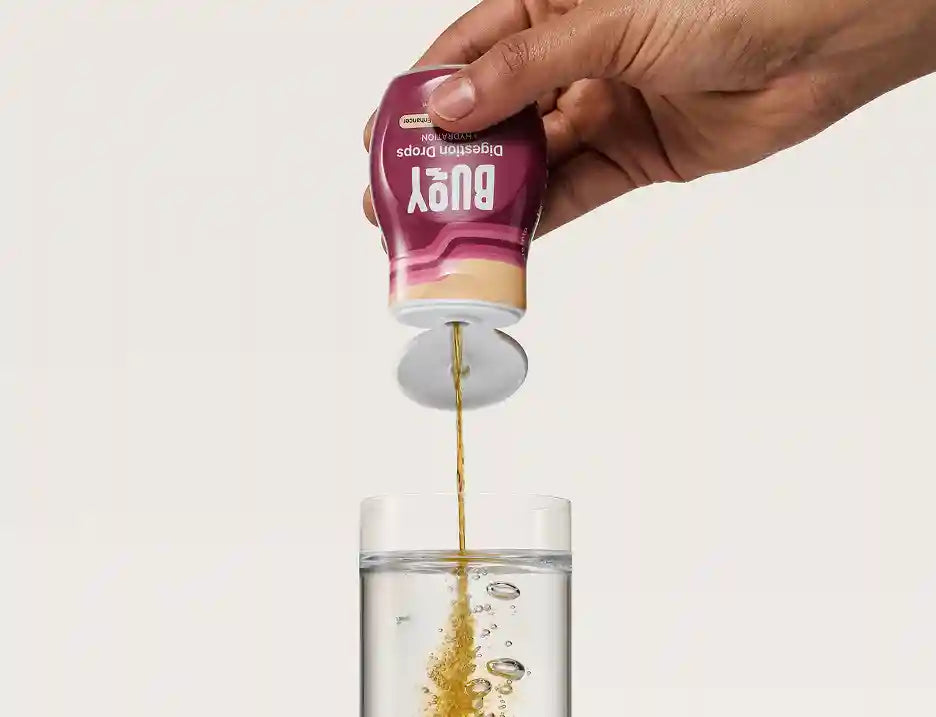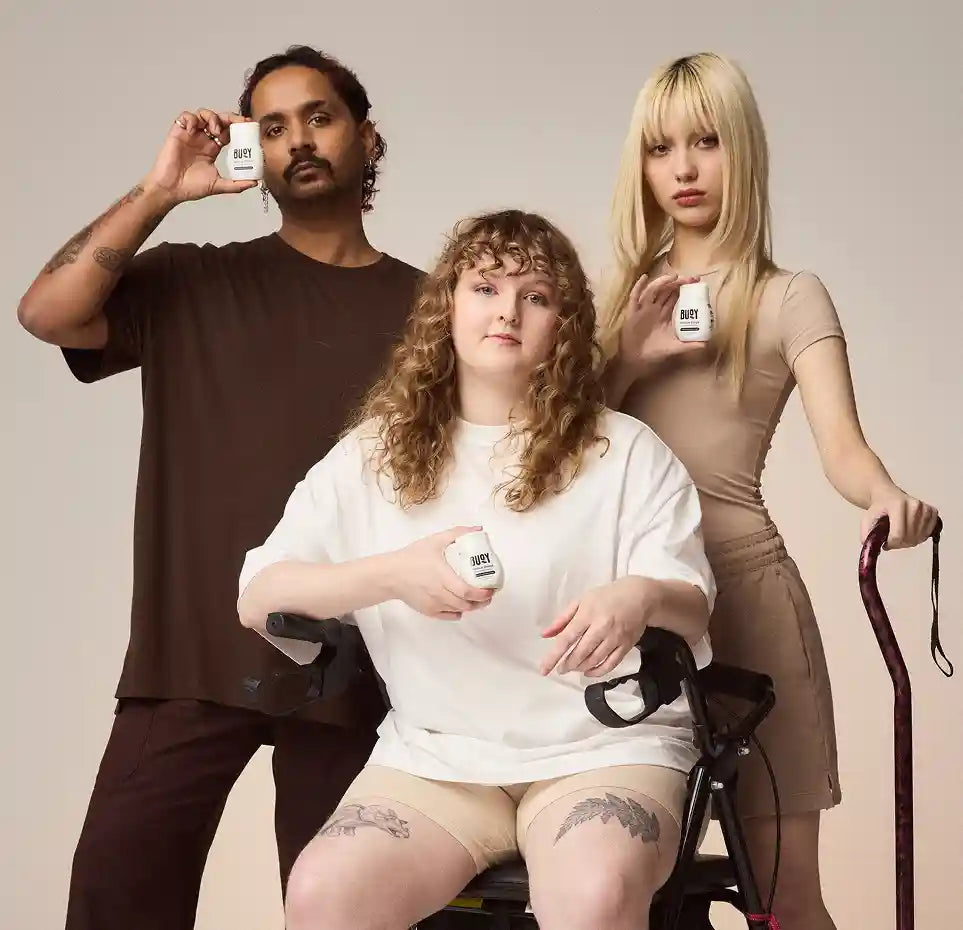
POTS and the Autonomic Nervous System: How It Works
Share
Living with POTS often feels like your body is working against you. Sudden dizziness, a racing heart, and overwhelming fatigue can turn simple daily tasks into exhausting challenges.
What’s causing these frustrating symptoms? The autonomic nervous system (ANS)—your body’s command center for regulating blood pressure, heart rate, and more.
When the ANS malfunctions, as it does in POTS, these critical processes are disrupted. But understanding how the ANS works and why it misfires is the first step toward regaining control over your symptoms.
In this guide, we’ll break down the connection between POTS and the ANS and share practical strategies—like hydration, mindfulness, and vagal nerve stimulation—that can help you feel more balanced and empowered.
Essential Takeaways:
- The Role of the Autonomic Nervous System in POTS: What does the autonomic nervous system have to do with POTS? A lot, actually! POTS symptoms like rapid heart rate, dizziness, and blood pooling are caused by autonomic nervous system dysfunction, which disrupts important processes like blood flow, heart rate regulation, and temperature control.
- How Can You Feel More in Control? POTS ANS regulation strategies include optimizing hydration, mindfulness exercises, vagal nerve stimulation, compression garments, and cooling techniques. With these practices, you can support your autonomic nervous system and better manage the day-to-day challenges of POTS.
Understanding the connection between POTS and the autonomic nervous system is crucial for managing this challenging condition. If you’re ready to take the mystery out of POTS and start managing your symptoms more effectively, keep reading. Small steps can lead to big improvements.
- What is the Autonomic Nervous System?
- How the Autonomic Nervous System Relates to POTS
- Common ANS Dysfunction Seen in POTS Patients
- POTS AND Regulation: Practical Tools and Techniques
- The Importance of Working with Specialists
- Understanding and Managing Your Autonomic Nervous System
What is the Autonomic Nervous System?
The autonomic nervous system (ANS) is your body’s command center for involuntary functions like heartbeat, blood flow, and digestion. For those with POTS, understanding ANS regulation is key to managing symptoms effectively.
The ANS is divided into two main parts:
- Sympathetic Nervous System (SNS): Often called the “fight or flight” system, the SNS kicks in when you’re stressed or need to react quickly, increasing heart rate and redirecting blood flow to working muscles.
- Parasympathetic Nervous System (PNS): Known as the “rest and digest” system, the PNS calms things down, slowing your heart rate and promoting digestion.
These two systems work together to maintain homeostasis, or balance, ensuring your body responds appropriately to the demands of daily life.
But when you have POTS, this balance is disrupted. The ANS struggles to regulate important processes like blood pressure and heart rate, leading to symptoms that can feel overwhelming.¹
Just starting your POTS journey? Get the full picture with our introductory guide: What is Postural Orthostatic Tachycardia Syndrome (POTS)?
How the Autonomic Nervous System Relates to POTS
POTS is classified as a type of dysautonomia, a condition where the autonomic nervous system (ANS) malfunctions. In POTS, this dysfunction primarily affects how your body regulates blood flow and pressure when you’re standing.
What Happens in POTS?
Here’s a simplified explanation: when you stand up, gravity pulls blood toward your legs. Normally, the ANS sends signals to tighten your blood vessels and push blood back up to your brain and heart. But in POTS, this system doesn’t work efficiently.
As a result, you might experience:
- Blood pooling in your legs.
- A racing heart (tachycardia) as your body tries to compensate for the lack of blood flow to your brain.
- Dizziness, lightheadedness, or even fainting.
These symptoms show how important the autonomic nervous system is for maintaining balance and stability in your body. When it misfires, everyday activities like standing or walking can feel overwhelming.² ³
Learn more about the POTS causes in our guide, Understanding the Causes of POTS.
Common ANS Dysfunction Seen in POTS Patients
POTS symptoms vary widely from person to person, but they all stem from a miscommunication in the autonomic nervous system. Here are some common ways the ANS malfunctions in POTS.
Orthostatic Intolerance
What It Is:
Difficulty maintaining blood pressure when standing, leading to dizziness, fatigue, or fainting.
Why It Happens:
Blood pools in the lower body, and the ANS struggles to redirect it upward.
Blood Pooling
What It Is:
Blood collects in the legs and feet, leaving less available for the brain and heart.
Why It Matters:
This leads to symptoms like swollen legs, heaviness, and fainting.
Temperature Dysregulation
What It Is:
Fluctuations in body temperature, including overheating or chills.
Why It Happens:
The ANS controls sweat glands, which help regulate temperature. When it malfunctions, sweat production may be excessive or insufficient.
Heart Rate Variability
What It Is:
A spike in heart rate, even without much physical exertion.
Why It Matters:
This is your body’s attempt to compensate for the lack of blood flow, but it can leave you feeling exhausted and shaky.² ³
These examples illustrate the wide-ranging impact of autonomic nervous system dysfunction in POTS. By recognizing these patterns, you can start identifying which symptoms affect you most and explore targeted strategies for relief.

POTS AND Regulation: Practical Tools and Techniques
While POTS doesn’t have a one-size-fits-all solution, there are practical tools you can use to help regulate your autonomic nervous system and manage symptoms.
Vagal Nerve Stimulation
The vagus nerve is a key player in the parasympathetic nervous system. Activating it can help calm an overactive sympathetic response. Try these techniques:
- Deep Diaphragmatic Breathing: Sit or lie down comfortably. Inhale deeply through your nose for a count of 4, letting your belly rise. Exhale slowly through your mouth for a count of 6. Repeat for 5–10 minutes daily to activate the vagus nerve and calm your system.
- Gargling with Water or Humming: Gargle with water for 30–60 seconds or hum a tune. These actions stimulate the back of your throat, activating the vagus nerve.⁴
Mindfulness and Meditation
Relaxation techniques like mindfulness and meditation can reduce stress and calm an overactive sympathetic nervous system by shifting your body into a parasympathetic state.
Spend 5–10 minutes focusing on your breath, noticing each inhale and exhale. Apps like Calm or Headspace can guide you if you’re new to meditation. Incorporating gentle yoga can also improve relaxation while enhancing blood flow.⁵
Compression Garments
Compression garments, such as socks or abdominal binders, improve blood flow by preventing blood from pooling in your legs.
Use compression socks (rated 20–30 mmHg) during the day, especially if you’ll be standing or walking for long periods. Abdominal binders can be worn for additional support but should be removed during meals to avoid discomfort.⁶
Cooling Methods
For individuals with POTS, temperature regulation is especially challenging since heat and temperature extremes can exacerbate symptoms. Maintaining a consistent temperature is key to minimizing discomfort.
Consider using air conditioning, personal fans, or handheld misters to keep cool during hot weather. Cooling vests, ice packs placed on the back of your neck or wrists, and damp cloths applied to pulse points can also provide relief.
Dressing in layers allows you to adjust quickly to temperature fluctuations, helping you stay comfortable throughout the day. These strategies are particularly helpful during physical activity or in warm environments.⁷
Structured Physical Activity
Low-impact exercises can strengthen the muscles that help pump blood, improving circulation and reducing symptoms over time.
Start with recumbent exercises like cycling or swimming. Aim for 5–10 minutes a day, gradually increasing as your stamina improves. Avoid upright exercises initially, as they can worsen symptoms.⁷
Hydration and Electrolytes
Staying hydrated with electrolyte-rich fluids supports blood volume and helps stabilize blood pressure.
Drink 8-12 cups of water daily. Adding high-quality electrolytes can help replenish minerals and enhance hydration. Avoid sugary or caffeinated beverages, which can dehydrate you.⁷ ⁸
Finding What Works for You
While managing POTS can feel overwhelming, these tools offer a starting point for supporting your autonomic nervous system and improving daily life. Small, consistent steps—like practicing deep breathing or staying hydrated—can lead to noticeable changes over time.
Experiment with these strategies to discover what works best for you and consider working with a healthcare provider for personalized guidance.
For more tips on managing your symptoms through lifestyle adjustments, check out our guide on lifestyle changes to manage POTS.

The Importance of Working with Specialists
While these tools are a great starting point, it’s essential to work with healthcare providers who understand POTS and the autonomic nervous system. A comprehensive care team might include:
- Autonomic Specialists: Neurologists or cardiologists who focus on dysautonomia can provide tailored treatment plans.
- Physical Therapists: They can guide you through exercise programs designed for POTS patients.
- Dietitians: A registered dietitian can recommend dietary adjustments to manage symptoms like blood pooling or GI issues.
- Mental Health Professionals: They can offer support and techniques for managing stress and anxiety, which often exacerbate POTS symptoms.
Professional guidance ensures you’re using the most effective strategies safely and correctly.² ⁷
Understanding and Managing Your Autonomic Nervous System
Living with POTS can feel overwhelming, but understanding the role of the autonomic nervous system and how its dysfunction contributes to your symptoms is a powerful first step.
This knowledge opens the door to actionable strategies like mindfulness, vagal nerve stimulation, hydration, and structured physical activity that can make a real difference in your daily life. With each small victory in managing your symptoms, you'll gain confidence in your ability to navigate life with POTS.
Take Control of Your POTS Journey Today
Remember, managing POTS is a journey, not a race. Small, consistent steps can lead to significant improvements over time. If you’re ready to take the next step in understanding and managing your condition, start exploring our other POTS resource guides for practical tips, in-depth insights, and guidance tailored to your POTS journey.

References:
-
Cleveland Clinic. (2022). Autonomic Nervous System. Retrieved from https://my.clevelandclinic.org/health/body/23273-autonomic-nervous-system
-
Johns Hopkins Medicine. (n.d.). Postural Orthostatic Tachycardia Syndrome (POTS). Retrieved from https://www.hopkinsmedicine.org/health/conditions-and-diseases/postural-orthostatic-tachycardia-syndrome-pots
-
Raj, S. R., Fedorowski, A. & Sheldon, R. S. (2022). Diagnosis and Management of Postural Orthostatic Tachycardia Syndrome. CMAJ: Canadian Medical Association Journal, 194(10), E378–E385. Retrieved from https://www.ncbi.nlm.nih.gov/pmc/articles/PMC8920526/
-
Chakraborty, P., Farhat, K., Morris, L., Whyte, S., Yu, X. & Stavrakis, S. (2023). Non-Invasive Vagus Nerve Stimulation in Postural Orthostatic Tachycardia Syndrome. Arrhythmia & Electrophysiology Review, 12, e31. Retrieved from https://doi.org/10.15420/aer.2023.20
-
Raj, V., Opie, M. & Arnold, A. C. (2018). Cognitive and Psychological Issues in Postural Tachycardia Syndrome. Autonomic Neuroscience: Basic & Clinical, 215, 46–55. Retrieved from https://pmc.ncbi.nlm.nih.gov/articles/PMC6160364/
-
Bourne, K. M., Sheldon, R. S., Hall, J., Lloyd, M., Kogut, K., Sheikh, N., Jorge, J., Ng, J., Exner, D. V., Tyberg, J. V. & Raj, S. R. (2021). Compression Garment Reduces Orthostatic Tachycardia and Symptoms in Patients With Postural Orthostatic Tachycardia Syndrome. Journal of the American College of Cardiology, 77(3), 285–296. Retrieved from https://pubmed.ncbi.nlm.nih.gov/33478652/
-
Cleveland Clinic. (2022). Postural Orthostatic Tachycardia Syndrome (POTS). Retrieved from https://my.clevelandclinic.org/health/diseases/16560-postural-orthostatic-tachycardia-syndrome-pots
- EDS Nutrition. Electrolytes for POTS and Dysautonomia: A Comprehensive Guide. Retrieved from https://edsnutrition.com/electrolytes-for-pots-guide/




